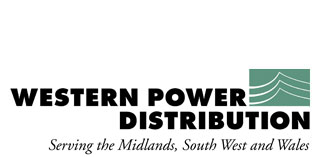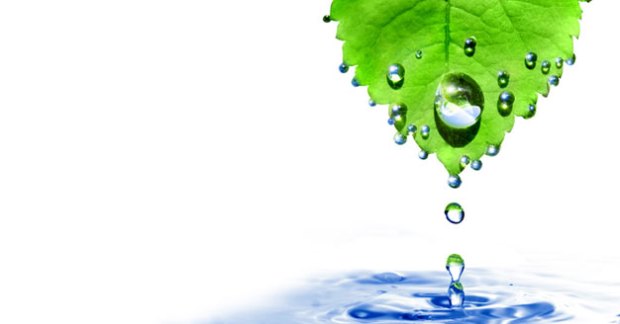Electricity, Water and Sewerage
Power loss helpline telephone number 0800 328 1111
Telephone: 0845 724 0240
Currently called Western Power, but there is a tendency to frequently change the name, formally known as e-on, Central Networks.
Owing to frequent power failures in the past, which were for the most part due to trees interfering with the power lines, the Parish Council try to keep on top of these types of problems. If you spot a tree which is growing close to the power lines then please advise as soon as possible, to avoid electricity interruption.
Here you will find Western Power’s latest news letter: rural newsletter-1
Being prepared for a power cut
- Keep a battery powered torch handy
- Protect sensitive electrical equipment with a surgeprotector plug
- Remember only analogue phones work in a power cut
- If you have a stair lift, find out if it works manuallyWhat to do if there is a power cut
- Check your trip switches
- If you have neighbours close-by see if they are affected
- Turn off electrical equipment that could get hot
- Keep your freezer shut
- Stay away from any fallen overhead lines
- Call and tell us you have no power!
Priority Service Register.
If you are vulnerable for any reason you can join the Priority Service Register.
If you rely on electricity for medical reasons or have communication needs, such as being partially sighted or deaf, Western Power will provide you with a direct telephone number to use if you have a power cut.
You can also join if you are vulnerable for any reason, such as being disabled, elderly or very ill. Western Power work with the British Red Cross and the WRVS to provide assistance to customers during longer power cuts. They can provide hot food and drinks and support for customers who are vulnerable.
If you wish, you can agree a password with Western Power so you feel safe if they ever need to visit you.
For more information about how to register you can email priorityservmids@westernpower.co.uk or call 0845 724 0240.
It is also a good idea to let the Parish Council know if you have difficulties as they may also be able to help you.
Severn Trent Water
Shotteswell comes under Severn Trent for water supplies, and unusually perhaps Thames Water for sewerage. For accounting purposes bills are paid to Severn Trent Water (STW).
In the event of a water leak here are the contact details: 0800 783 4444.
Link directly to their web site for all useful tips as to whether you are new to the area or need to undertake any whorl or just want to report a fault.
Your water pressure
Our water supply network is designed so that each property has a plentiful supply of water at a good pressure.
There are a lot of things that can affect the pressure of water in your home. Pressure from your tap depends on the height of the building above the water main and its local service reservoir, whether you share a service pipe with your neighbours and the condition, size and length of your service pipe.
Pressure can vary at different times of the day as it is affected by the demand for water from our customers. Mornings and early evening are the most common times of day where there is more demand on the water supply, which can result in lower pressure. There can also be a seasonal variation in demand for water, for example in areas with lots of summer visitors or where water hungry crops are grown.
Water Flow
Water flow depends on the size of your water supply pipe. You can only get a certain amount of flow through a small pipe to run one tap so if there are several taps open or appliances operating at the same time, there may not be enough water for them all to work at full capacity.
To ensure you are receiving the maximum flow that you can, check whether your internal stop valve is fully open. Your internal stop valve is generally located under your kitchen sink.
Water supply pipes in older properties were often laid as communal shared pipes between a number of houses. This can cause low flows when these houses use water at the same time. Modern appliances like washing machines, dishwashers and power showers can add to the problem. Modern houses and flats usually have 25mm diameter individual water supply pipes.
If your flow issues are related to the size of your connection pipe you can either install a storage cistern in your property which will help to provide a constant supply of water, or re-lay your supply pipe in a larger size.
Changes in your Pressure
As well as daily and seasonal effects, there are a number of things that can affect the pressure of your water –
- a burst pipe or leak, or a fault with the water network in your area
- temporary work we may be carrying out on the network
- problems within your home plumbing
We aim to manage the water pressure in the distribution network to reduce the number of leaks and bursts and any interruptions to your water supply. Your water pressure may change over time as we manage the network. If you think your water pressure is too low, we’ll investigate the cause free of charge. If it’s our problem, we’ll fix it. If not, we’ll provide advice on what you need to do.
Supply interruptions
Whilst we do all we can to keep water supplies continuous, something unexpected can stop the flow. If your supply is interrupted and you haven’t been previously warned please contact us on 0800 783 4444 and we’ll investigate straight away. If the mains supply fails, we aim to restore it in less than 12 hours, but repairing larger mains can take longer.
Leak detection
Sometimes, we turn off sections of mains pipe at night to check for and identify leaks. These interruptions normally last less than two hours, between midnight and 6am. If that might give you a problem, get in touch with us on 0800 783 4444.
Any problems?
We hope you never have any. But if you do, let us know and we promise to investigate and respond to you quickly and courteously.
Thames Water
For any sewerage issues Tel no : 0845 9200 800
Sewers are only designed to take away wastewater, toilet tissue and human waste.
All other paper products, including kitchen roll and wet wipes, should be put in the bin.
Most blockages are caused by cooking fat and oil, which congeal in the sewers, forming a thick layer around the pipe. This prevents sewage from flowing and can cause it to back up.
Wet wipes and sanitary items also contribute to some of the most troublesome blockages.
Top tips to keep your drains flowing
- Love your loo: Make sure that only wastewater, toilet tissue and human waste goes down your drains and into the sewer.
- Bin it – don’t block it: Wrap up sanitary products, nappies, wet wipes and condoms and put them in the bin.
- Think – not in the sink! After cooking, fat, oil and grease should be left to cool – it can then be put in the bin or mixed with seeds and nuts to make a feeder for birds.
- Chemicals, solvents, engine oil and paint should be taken to your local refuse site.
- Medicines, tablets, syringes and needles should be taken to your pharmacist, local hospital or health authority for safe disposal.
-
Bin it – don’t block it
 ‘Bin it – don’t block it’ is our campaign to educate people about ‘sewer abuse’ – which is putting anything other than human waste or toilet tissue down drains.The biggest no-no is pouring cooking fat down the sink as it sets hard, forming ‘fatberg’ blockages. This prevents sewage from flowing and can cause it to back up, especially when other unsuitable products such as wet wipes and sanitary items mix with the fat, leading to waste backing up into homes and streets, and having a devastating impact on the environment.We clear around 55,000 blockages from our sewers each year at a cost of £12m and 7,000 customers suffer from sewer flooding in their homes and gardens – a truly miserable experience.
‘Bin it – don’t block it’ is our campaign to educate people about ‘sewer abuse’ – which is putting anything other than human waste or toilet tissue down drains.The biggest no-no is pouring cooking fat down the sink as it sets hard, forming ‘fatberg’ blockages. This prevents sewage from flowing and can cause it to back up, especially when other unsuitable products such as wet wipes and sanitary items mix with the fat, leading to waste backing up into homes and streets, and having a devastating impact on the environment.We clear around 55,000 blockages from our sewers each year at a cost of £12m and 7,000 customers suffer from sewer flooding in their homes and gardens – a truly miserable experience.
Screen removing flushed products at Crossness Sewage Treatment works
To flush, or not to flush?
The drains connected to your home were not designed to cope with anything other than wastewater, toilet tissue and human waste.
Even the products labelled ‘flushable’ do not break down in the sewer. Flushing them could block your internal plumbing or the main sewer, causing sewage to back-up.
Our message is simple, if it’s not water, toilet tissue or poo, please… bin it – don’t block it.
What we’re doing to help
Thousands of unsuitable products are washed down the drain each year contributing to around 80,000 blockages across our supply area.
This is made worse by confusing and misleading product labelling, which encourages customers to flush unsuitable items, particularly toddler wipes and sanitary items. Although these items disappear when you flush your loo, they can take a number of years to break down. There are currently no restrictions in place to prevent these products being sold as ‘flushable’.
The only product to pass water industry ‘flushability’ tests so far is toilet paper. Manufacturers have their own tests, which are more lenient resulting in a greater number of products being labelled ‘flushable’.
To resolve this, the water industry and manufacturers are working together to develop a shared protocol. This project is also hoping to influence product labelling
|
|
Turn off the tapSimply turning off the tap while brushing your teeth, washing your hands or shaving can save over 5 litres of water every minute. |
|
|
Take shorter showersWhy not challenge yourself and your family to shower one minute quicker? In a year you could save up to 10,000 litres of water. |
|
|
Take a shower instead of a bathOne bath can use up to 100 litres of water, whereas an efficient shower uses under 50 litres. But remember power showers can use more water than baths. |
|
|
Use a bowl for washing vegetablesA running kitchen tap can use up to 20 litres of water every minute. You can reduce water waste by using a bowl to wash and prepare your vegetables. Then you can use the water to give your house plants a drink. |
|
|
Make full use of your washing machineIf you’re clothes aren’t that dirty remember to use a shorter wash cycle – this uses less energy. Washing at a lower temperature helps too. |
|
|
Make full use of your dishwasherDid you know that modern efficient dishwashers can use less water than washing up by hand? But wait until it is full to switch it on to be even more efficient. |
|
|
Lawns are great survivorsEven when they look dry and brown, they’ll spring back with the first heavy rain, so try to avoid watering them wherever possible.
|









